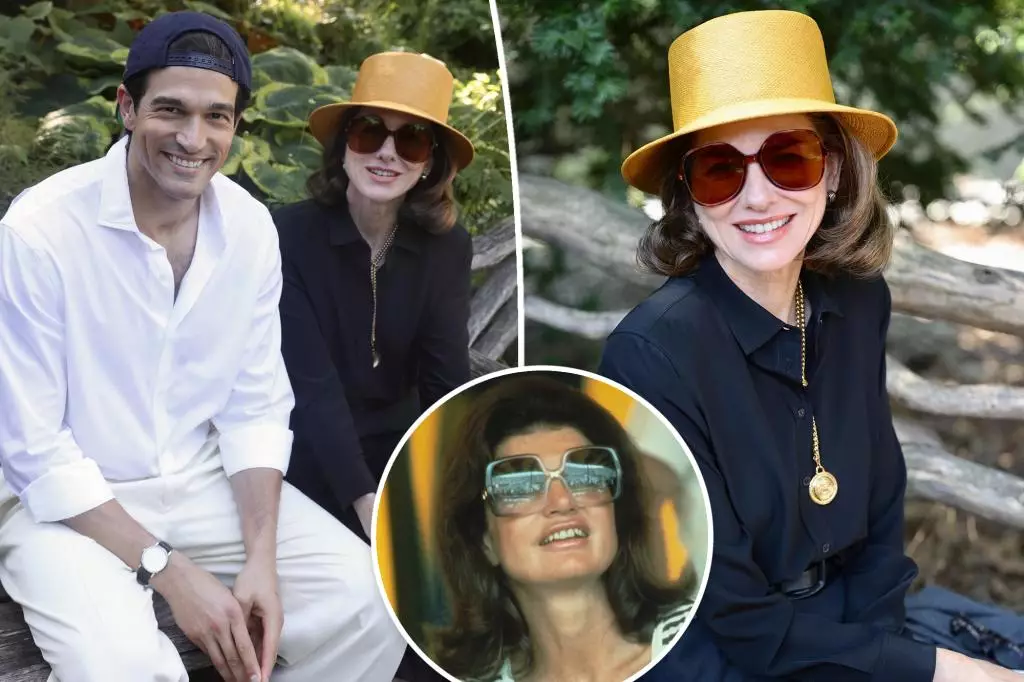In the realm of television, few endeavors are as ambitious as reimagining the lives of America’s most revered figures. Ryan Murphy’s latest project, “American Love Story,” exemplifies this bold artistic pursuit by breathing new life into iconic personalities like Jacqueline Kennedy Onassis and Carolyn Bessette-Kennedy. The casting of Naomi Watts as Jackie is a strategic choice that underscores Murphy’s commitment to authenticity and reinvention. Watts’s physical transformation—complete with a darker, period-appropriate hairstyle and signature accessories—demonstrates an effort to capture the essence of a woman who remains a symbol of timeless elegance. Such meticulous details highlight how modern productions are balancing historical accuracy with creative storytelling to keep audiences captivated.
Nevertheless, the portrayal sparks inevitable debate about the boundaries of artistic interpretation. Casting a star like Watts, renowned for her dramatic versatility, suggests an emphasis on emotional depth over superficial resemblance. This approach raises questions about fidelity versus artistic license; should actors embody the true appearance of historical figures, or is a compelling performance enough? In this context, Murphy’s decision to prioritize character immersion over minute facial similarities might be viewed as a strategic move to retain viewer engagement.
Fashion as a Reflection of Character and Legacy
An often-overlooked aspect of historical portrayals is costume design—integral in shaping perceptions and reinforcing authenticity. The controversy surrounding Carolyn Bessette-Kennedy’s wardrobe illustrates how deeply fans and industry insiders value sartorial fidelity. Critics and stylists alike expressed disappointment that her iconic minimalist aesthetic was not adequately represented, fearing that inaccuracies diminish the legacy of a style icon. Brad Johns, Bessette’s hair colorist, voiced particular concern, emphasizing that the true Carolyn’s delicate blonde hair contrasted sharply with portrayed appearances.
This debate illuminates the broader significance of fashion in storytelling. Costumes do more than dress characters; they serve as visual signposts of identity and influence audience perceptions of authenticity. When productions falter in this aspect, it undermines the entire narrative, risking viewer skepticism. Ryan Murphy’s response—promising a “work in progress” and inviting fashion bloggers—demonstrates awareness that such details matter. The project’s ability to evolve and fine-tune these elements could profoundly affect its reception and credibility among fans and critics alike.
The Challenges of Balancing Artistic Vision and Fan Expectations
Murphy’s revealing of the initial images as “a work in progress” reflects a recognition of the scrutiny surrounding portrayals of these legendary figures. Fans harbor strong sentiments, especially regarding Carolyn Bessette-Kennedy’s iconic style and hair color. The involvement of high-profile stylists and the community of fashion enthusiasts underscores the high stakes: fans expect not only historical accuracy but also respect for the cultural significance of these figures.
This tension exemplifies a broader challenge in biographical storytelling—navigating artistic interpretation while honoring legacy. Murphy’s promise to include dedicated fashion experts and fans in future previews hints at a collaborative approach that may bridge the divide between creative liberty and authenticity. Successful execution of this delicate balance could set new standards for how Hollywood and television productions handle real-life icons, ultimately elevating the genre to an art form that respects both storytelling and historical integrity.
Ultimately, this project exemplifies the complexities of portraying real-life legends in an era where visual culture and fan engagement drive storytelling. It remains to be seen whether Murphy’s team can finesse these details into a compelling, authentic portrayal that honors these American icons’ enduring legacy.

